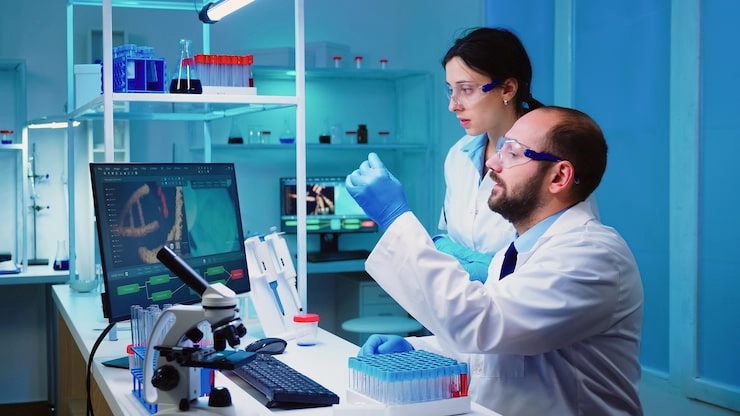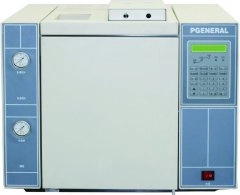High-performance liquid chromatography (HPLC) is a key tool in analytical chemistry. It helps scientists separate, identify, and measure compounds accurately. The column is the heart of any HPLC system. Its stationary phase, particularly pore size, greatly affects efficiency and results. For researchers, lab managers, and chemists, knowing how pore sizes influence HPLC outcomes is vital for great separations. In this article, we’ll explore the science of pore sizes, their effects on chromatography, and how to pick the right column for your needs. At PERSEE, we are here to guide you through this important part of chromatography.

The Basics of Pore Sizes in HPLC Columns
Definition and Importance of Pore Sizes
Pore size refers to the width of tiny holes in the stationary phase particles. These are measured in angstroms (Å). These holes create a large inner surface area where analyte molecules interact with the stationary phase. This interaction drives separation. Pore size matters because it decides how well molecules can reach the inner surface. This surface makes up over 99% of the column’s total area. For example, a typical 150 x 4.6 mm column has a surface area as big as a tennis court. This shows why pore structure is key for clear separations.
How Pore Sizes Relate to Particle Diameters
Pore size and particle width are linked factors. They affect column efficiency. Smaller particles (e.g., 3–5 µm for HPLC or <2 µm for UHPLC) increase surface area. This boosts clarity but needs higher pressure because pores are less accessible. Larger pores improve flow, letting bigger molecules move easily. This is crucial for large molecules like proteins. The connection can be shown as follows:
|
Particle Size (µm) |
Pore Size (Å) |
Typical Use |
|
<2 (UHPLC) |
60–160 |
Sharp small molecule analysis |
|
3–5 (HPLC) |
80–300 |
General separations |
| 5–10 | 300–4000 |
Large molecule and prep work |
Choosing the right mix ensures smooth flow and good efficiency.
The Role of Pore Sizes in Chromatographic Efficiency
Effects of Pore Sizes on Separation Resolution
Resolution in HPLC means telling apart two close peaks. Pore size affects resolution directly. It changes how analytes interact with the stationary phase. Smaller pores (60–120 Å) offer more surface area. They suit small molecules (<3,000 Da) that can enter these pores. This leads to clear, sharp peaks. However, for larger molecules like peptides or proteins, small pores limit access. This reduces efficiency. Larger pores (300–4000 Å) let these molecules interact well. They improve clarity for large molecule separations.
Influence on Retention Time and Peak Shape
Pore size also affects how long analytes stay and how peaks look. Smaller pores increase retention for small molecules. They allow more surface contact. But, they can cause peak widening if molecules struggle to enter. Larger pores shorten retention time for bigger molecules. They allow faster movement, creating narrow, even peaks. For example, in reversed-phase HPLC, a C18 column with 300 Å pores gives sharper peaks for proteins than a 100 Å pore column. The latter may cause tailing or incomplete elution.
How Pore Sizes Affect Column Performance
Impact on Sample Loading Capacity
Sample loading capacity is how much analyte a column can handle without losing quality. Larger pores increase capacity for big molecules. They provide more reachable surface area. For instance, a column with 300 Å pores can take more protein than one with 100 Å pores. This makes it great for prep work. Smaller pores work better for low-amount small molecule tests. Here, high surface area boosts sensitivity.
Compatibility with Different Analyte Molecules
Pore size must match analyte size for good separations. Small molecules need smaller pores for strong surface contact. Larger molecules, like antibodies, need bigger pores to avoid being blocked. The table below shows typical pore size matches:
|
Analyte Type |
Recommended Pore Size (Å) | Example Uses |
| Small molecules (<3,000 Da) | 60–160 |
Drugs, pesticides |
|
Peptides (3,000–10,000 Da) |
120–300 | Peptide studies |
| Proteins (>10,000 Da) | 300–4000 | Biopharma tests |
Picking the right pore size ensures good fit and avoids issues like weak retention or low recovery.
Selecting the Right Pore Size for Your Application
Factors to Consider When Choosing a Pore Size
Choosing the right pore size means balancing analyte traits, goals, and system limits. Key factors include:
Molecular Weight of Analytes
- Small molecules: Use 60–160 Å pores for best surface area and retention.
- Peptides and small proteins: Choose 120–300 Å pores for good access and clarity.
- Large proteins: Pick 300–4000 Å pores for bigger molecule sizes.
Type of Analysis (Small Molecule vs. Biomolecule)
- Small molecule tests: Use smaller pores for clear separations in drug or environmental work.
- Biomolecule tests: Choose larger pores for tasks like protein purification or antibody studies.
Other factors include column chemistry (e.g., C18, C8), mobile phase makeup, and system pressure limits. For complex samples, gradient elution with right-sized pores can improve results.
Commonly Used Pore Size Ranges in HPLC Columns
These ranges are common in HPLC uses:
- 60–120 Å: Great for small molecules in drug and environmental tests.
- 120–300 Å: Good for peptides and small proteins in proteomics.
- 300–4000 Å: Best for large biomolecules in biopharma and prep work.
For more on column selection, check our HPLC column offerings.
Challenges Associated with Incorrect Pore Sizes
Risks of Using Inappropriate Pore Sizes for Specific Applications
Using the wrong pore size can harm your analysis. For example:
- Small pores with large molecules: Causes exclusion, weak retention, and poor clarity.
- Large pores with small molecules: Lowers surface area, leading to weak retention and overlapping peaks.
These errors can cause inaccurate results, lower sensitivity, or column clogging, especially in complex samples.
Troubleshooting Issues Related to Pore Size Mismatch
If you face issues like peak tailing, low clarity, or uneven retention times, try these steps:
- Check analyte size: Ensure pore size matches the molecule’s weight.
- Review column details: Confirm the pore size suits your use.
- Tweak mobile phase: Adjust solvent strength to fix minor mismatches.
- Ask experts: Contact our team at PERSEE’s contact pagefor custom advice.
PERSEE: A Trusted Supplier for High Performance Liquid Chromatography Solutions

Overview of PERSEE’s Expertise in HPLC Technology
At PERSEE, we’ve built analytical tools for over 20 years. We deliver advanced HPLC solutions to labs worldwide. Our focus on quality and accuracy ensures our columns and systems meet modern chemistry needs. Whether you’re testing small molecules or complex biomolecules, our expertise helps you get reliable results.
Key Features and Benefits of PERSEE’s HPLC Products
Our L600 High-Performance Liquid Chromatography System is built to improve your separations:
- Flexible column options: We offer columns with pore sizes from 60 Å to 4000 Å for various uses.
- Strong pressure performance: Our systems handle up to 600 bar for HPLC and 1200 bar for UHPLC. This suits small-particle columns.
- Durable design: Made for long-term use, cutting downtime and costs.
- Easy-to-use interface: Simplifies method setup and data review for all users.
These features make our HPLC solutions perfect for drug, environmental, and biopharma work.
Conclusion
Pore size is a key factor in boosting HPLC column efficiency and results. By understanding how pore sizes affect clarity, retention, and capacity, you can choose the right column for your task. This applies to both small molecule tests and biomolecule purification. At PERSEE, we’re committed to supporting your research with top-quality HPLC solutions tailored to your needs. Visit our homepage to explore our products and improve your chromatography results.
Frequently Asked Questions (FAQs)
What is the significance of pore size in HPLC columns?
Pore size determines how well the stationary phase’s inner surface is accessed. This affects analyte retention, clarity, and column efficiency. Smaller pores (60–160 Å) suit small molecules. They provide high surface area for better separations. Larger pores (300–4000 Å) work for bigger molecules like proteins. They improve flow and reduce exclusion. Choosing the right pore size ensures strong analyte-stationary phase interaction. This leads to sharper peaks and better clarity.
Can I use one pore size for all types of analyses?
No, one pore size doesn’t work for all tests. Small molecules need smaller pores (60–160 Å) for strong surface contact. Larger molecules, like peptides or proteins, require bigger pores (120–4000 Å) to avoid exclusion and ensure good flow. Using the wrong pore size can cause poor clarity, peak widening, or weak retention. Always match pore size to the analyte’s weight and test type for best results.
How do I choose the correct pore size for my application?
To pick the right pore size, consider:
- Analyte weight: Use 60–160 Å for small molecules, 120–300 Å for peptides, and 300–4000 Å for proteins.
- Test type: Small molecule tests need smaller pores; biomolecule tests need larger ones.
- Column chemistry: Ensure it matches the stationary phase (e.g., C18, C8).
- System limits: Check if your HPLC system supports the pressure needs of smaller particles.
Talking to experts, like our team at PERSEE, can help customize your column choice.









